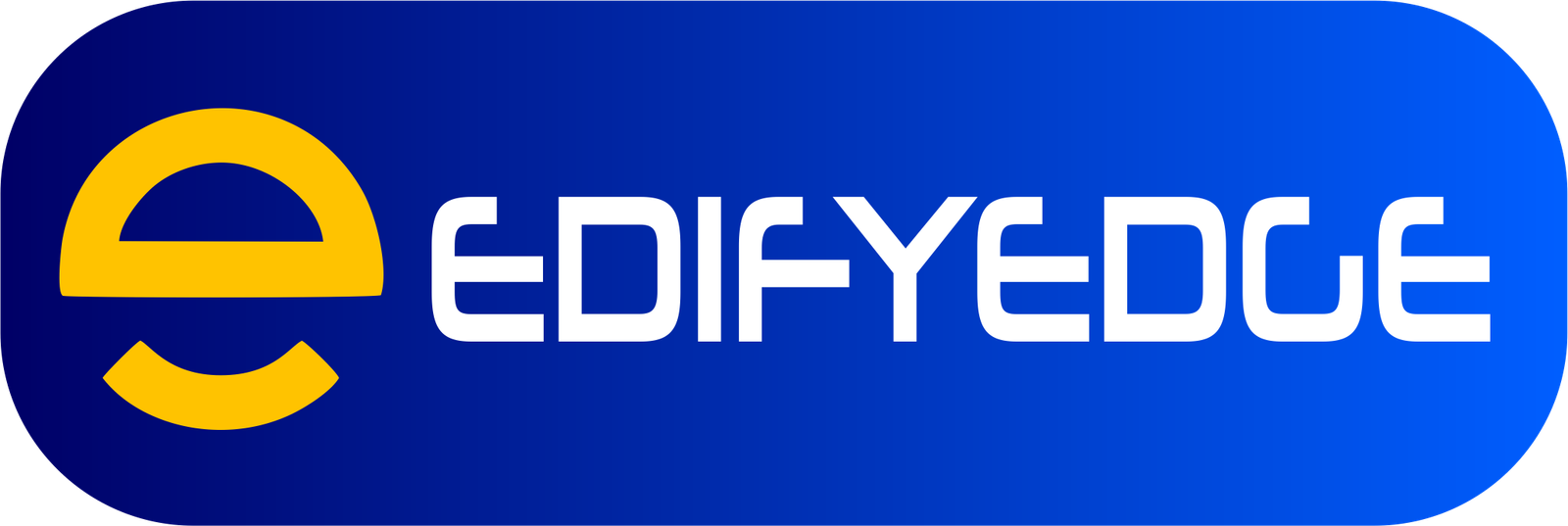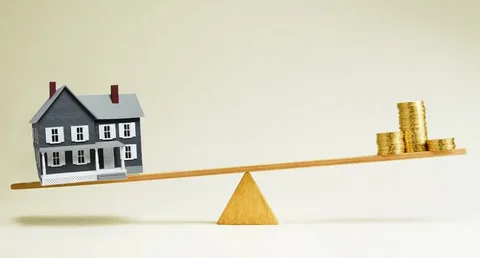What is an Average Home Loan Interest Rate?
The average home loan interest rate refers to the typical interest rate that lenders charge on mortgage loans for purchasing residential properties. This rate represents the cost of borrowing money to finance a home and is expressed as an annual percentage rate (APR).
The average home loan interest rate is an essential metric for both lenders and borrowers. For lenders, it helps determine the profitability of their mortgage products and guides pricing decisions. For borrowers, the average rate provides a benchmark to evaluate the competitiveness of loan offers and estimate monthly mortgage payments and long-term costs.
Understanding the average home loan interest rate is crucial for homebuyers because even a slight variation in the rate can significantly impact the overall cost of the mortgage over its lifetime. A lower interest rate translates to lower monthly payments and substantial savings, potentially enabling borrowers to afford more expensive homes or allocate funds toward other financial goals.
How Average Home Loan Rates are Determined
Economic conditions also play a significant role in determining average home loan rates. During periods of strong economic growth and low unemployment, the demand for loans tends to increase, which can push interest rates higher. Conversely, during economic downturns or recessions, interest rates may decrease as the demand for loans decreases.
Inflation is another key factor that affects home loan rates. When inflation is high, lenders typically raise interest rates to compensate for the erosion of the dollar’s purchasing power. This helps to ensure that they can still earn a reasonable return on their investments.
The supply and demand for mortgage-backed securities, which are bundles of mortgages that are traded on the secondary market, also influence average home loan rates. When there is high demand for these securities, it can drive down mortgage rates, as lenders have access to more funds to lend out. Conversely, when demand for mortgage-backed securities is low, it can lead to higher mortgage rates.
Finally, the overall health and stability of the housing market can impact average home loan rates. During periods of high home prices and strong demand for housing, lenders may raise rates to manage risk and maintain profitability. Conversely, when the housing market is struggling, lenders may lower rates to attract more borrowers and stimulate demand.
Current Average Home Loan Interest Rates
As of June 2023, the average interest rate for a 30-year fixed-rate mortgage in the United States is around 6.5%. For a 15-year fixed-rate mortgage, the average rate is approximately 5.75%. Adjustable-rate mortgages (ARMs) have an average initial rate of around 5.25% for a 5/1 ARM, meaning the rate is fixed for the first 5 years and then adjusts annually after that.
These rates can vary slightly depending on the lender and the borrower’s credit score, down payment amount, and other factors. Generally, borrowers with higher credit scores and larger down payments will qualify for lower interest rates.
It’s important to note that mortgage rates fluctuate daily based on market conditions, so these averages are just a snapshot in time. Prospective homebuyers should check with multiple lenders for the most up-to-date rate quotes specific to their individual situations.
Historical Trends in Average Home Loan Rates
Average home loan interest rates have fluctuated significantly over the past several decades, influenced by various economic factors and policy decisions. In the early 1980s, rates reached staggering levels, with the average 30-year fixed mortgage rate peaking at around 18% in 1981. This high-interest rate environment was largely driven by efforts to combat rampant inflation during that period.
Throughout the 1990s and early 2000s, rates gradually declined, providing a more favorable climate for homebuyers. The average 30-year fixed rate hovered around 8% in the 1990s and dipped below 7% in the early 2000s.
The 2008 financial crisis
The 2008 financial crisis and the subsequent Great Recession had a significant impact on home loan rates. In response to the economic downturn, the Federal Reserve implemented aggressive monetary policies, including lowering the federal funds rate to near-zero levels. As a result, average home loan rates plummeted, reaching historic lows. In November 2012, the average 30-year fixed mortgage rate dipped below 3.5%, providing unprecedented opportunities for homebuyers and refinancers.
In the years following the Great Recession, average home loan rates remained relatively low, fluctuating between 3.5% and 4.5% for a 30-year fixed mortgage. However, as the economy recovered and the Federal Reserve began gradually raising interest rates, home loan rates started to climb again.
The COVID-19 pandemic in 2020 brought another wave of economic uncertainty, prompting the Federal Reserve to once again lower interest rates to support the economy. This led to a temporary dip in average home loan rates, with the 30-year fixed rate dropping below 3% for a brief period.
As the economy continues to recover and inflationary pressures mount, the Federal Reserve has begun raising interest rates again in an effort to cool inflation. This has resulted in a steady increase in average home loan rates throughout 2022 and into 2023, with the 30-year fixed rate surpassing 7% in recent months.
Impact of Interest Rates on Homebuyers
The interest rate on your home loan has a significant impact on your monthly mortgage payments and the overall cost of homeownership. Even a small fluctuation in rates can make a substantial difference in affordability.
Monthly Payment Changes: As interest rates rise, so do your required monthly payments. For example, on a $300,000 30-year fixed-rate mortgage, an increase in rates from 4% to 5% would boost your monthly payment by around $170. Over the life of the loan, that’s over $60,000 in additional interest paid.
Purchasing Power: Higher interest rates diminish your purchasing power as a homebuyer. The same monthly budget allows you to afford a less expensive property when rates are elevated. This can force buyers to recalibrate their homeownership goals or postpone their search until rates become more favorable.
Overall Costs: The total interest paid over the lifetime of the mortgage is heavily influenced by the interest rate. On that same $300,000 loan amount, the difference between a 4% and 6% rate equates to over $100,000 in interest costs. Lower rates provide substantial savings over decades of payments.
Affordability Constraints: As rates rise, the financial strain increases for homebuyers operating within a fixed budget. This can make the difference between comfortably affording a mortgage or pushing the limits of one’s financial capacity. Prudent buyers must reevaluate price ranges when rates fluctuate.
Monitoring interest rate trends and securing favorable rates is crucial for prospective homebuyers. Even incremental rate differences can significantly impact housing costs and long-term financial obligations associated with a mortgage.
Shopping for the Best Home Loan Rate
Getting the best possible interest rate on your home loan can save you thousands of dollars over the life of the mortgage. Here are some tips to help you secure the lowest rate:
Improve Your Credit Score: Your credit score is one of the biggest factors that lenders consider when determining your interest rate. A higher credit score demonstrates to lenders that you are a lower risk borrower, which can qualify you for better rates. Work on paying down debts, correcting any errors on your credit report, and making all payments on time to boost your score.
Make a Larger Down Payment: The more you can put down upfront, the lower your interest rate is likely to be. A larger down payment shows lenders that you have more skin in the game and are less likely to default on the loan. Aim for a down payment of at least 20% to avoid having to pay private mortgage insurance (PMI) and to qualify for the best rates.
Consider a Shorter Loan Term: While a 30-year mortgage may have a lower monthly payment, the interest rate is typically higher than a 15-year or 20-year loan. If you can afford the higher monthly payments, a shorter loan term can save you significant money in interest over the life of the loan.
Shop Around with Multiple Lenders: Interest rates can vary significantly between lenders, so it’s important to get quotes from several banks, credit unions, and online lenders. Compare the annual percentage rate (APR), which includes the interest rate and other fees, to get a true picture of the total cost of the loan.
Avoid Excessive Debt:
Lenders will look at your debt-to-income ratio, which is the amount of debt you have compared to your monthly income. A high debt-to-income ratio can be a red flag for lenders and may result in a higher interest rate or even a denial of your loan application.
Lock in Your Rate: Once you’ve found the best rate, lock it in with the lender. This guarantees that your interest rate won’t change between the time you apply for the loan and the closing date, protecting you from any potential rate increases during that period.
By following these tips, you can increase your chances of securing the most favorable interest rate on your home loan, potentially saving you a significant amount of money over the life of the mortgage.
Comparing Lenders and Loan Offers
When shopping for a home loan, it’s crucial to compare offers from multiple lenders to find the best deal. While the interest rate is a significant factor, it’s not the only consideration. Lenders may have varying fees, closing costs, and loan terms that can impact the overall cost of the mortgage.
Evaluating lenders involves more than just looking at the advertised interest rates. You should research the lender’s reputation, customer service, and overall financial stability. Reading reviews from past customers can provide valuable insights into the lender’s process and how they handle issues or complications.
Understand the various fees associated with each loan offer, such as origination fees, application fees, appraisal fees, and closing costs. These fees can vary significantly between lenders and can add thousands of dollars to the overall cost of the loan. Be sure to ask for a detailed breakdown of all fees and closing costs to make an accurate comparison.
Pay close attention to the loan terms, including the loan duration (e.g., 15-year or 30-year), the type of interest rate (fixed or adjustable), and any prepayment penalties. These factors can have a substantial impact on the total interest paid over the life of the loan and your long-term financial obligations.
It’s also essential to consider the lender’s requirements for credit scores, down payment amounts, and debt-to-income ratios. Some lenders may be more flexible than others, which could make a difference in your ability to qualify for the loan or obtain a lower interest rate.
By thoroughly evaluating and comparing lenders and loan offers, you can make an informed decision and potentially save thousands of dollars over the life of your home loan.
Strategies for Locking in a Low Rate
Locking in a low interest rate on your home loan can save you thousands of dollars over the life of the mortgage. Here are some effective strategies to consider:
Locking Your Rate
When you lock your interest rate, the lender guarantees that rate for a specified period, usually between 15-60 days. This protects you from rising rates while you finalize your purchase. However, if rates drop, you may have to pay fees to get the lower rate. Lock as soon as you’re comfortable with the rate to avoid missing out if rates rise.
Buying Mortgage Points
You can pay discount points upfront to lower your interest rate permanently. One point typically costs 1% of the loan amount and reduces your rate by 0.25%. Buying points makes sense if you plan to stay in the home long enough for the upfront costs to be offset by the interest savings.
Timing Your Lock
Rates can fluctuate daily, so timing is crucial. Typically, the best time to lock is when rates dip and economic conditions suggest they may rise again soon. Monitor rate trends closely and lock when you see a rate you’re satisfied with that fits your budget.
Loan Program Considerations
Different loan programs like conventional, FHA, VA, and jumbo loans can have varying rate opportunities. Compare options across multiple lenders and loan types to find the most competitive combination of rates and fees.
Negotiate and Compare
Don’t simply accept the first rate you’re quoted. Get quotes from multiple lenders and negotiate for better terms, leveraging the competition to your advantage. Lenders may be willing to match or beat another lender’s offer to earn your business.
The Outlook for Future Home Loan Rates
Projecting future home loan interest rates involves analyzing various economic indicators and forecasts. The Federal Reserve’s monetary policy decisions play a crucial role in influencing mortgage rates.
Economic growth, inflation rates, and employment data are also key factors that can shape the direction of home loan rates. Robust economic expansion and rising inflation typically lead to higher interest rates, while a slowing economy or low inflation may prompt rate cuts to stimulate borrowing and spending.
Additionally, global economic conditions and geopolitical events can influence the demand for U.S. Treasury bonds, which mortgage rates are closely tied to. An increased demand for bonds, often seen as a safe haven during times of uncertainty, can drive down yields and subsequently lower mortgage rates.
According to projections from leading financial institutions and economic forecasters, home loan rates are expected to continue their upward trajectory in the near term. The Federal Reserve has signaled its commitment to combating high inflation through further rate hikes, which could push mortgage rates above 7% by the end of the year.
However, if inflation begins to cool and the economy shows signs of slowing, the Fed may pause or even reverse course on rate increases, potentially stabilizing or lowering home loan rates in the latter part of the year or in 2024.
It’s important to note that interest rate forecasts are subject to change based on evolving economic conditions and market dynamics. Homebuyers and homeowners should closely monitor rate movements and consult with financial advisors to make informed decisions about their mortgage options.
Resources for Tracking Average Rates
To stay informed about current average home loan interest rates and monitor changes over time, it’s essential to rely on authoritative and trusted sources. Here are some valuable resources to consider:
Government Agencies and Surveys
- The Federal Reserve’s Survey of Consumer Finances: This comprehensive survey provides detailed insights into household finances, including mortgage rates and borrowing costs.
- Freddie Mac’s Primary Mortgage Market Survey: Freddie Mac, a government-sponsored enterprise, publishes weekly updates on average mortgage rates based on surveys of lenders across the United States.
- The U.S. Department of Housing and Urban Development (HUD): HUD offers valuable data and reports on mortgage rates, housing market trends, and affordability.
Industry Associations and Organizations
- Mortgage Bankers Association (MBA): The MBA represents the real estate finance industry and provides regular updates and forecasts on mortgage rates and lending conditions.
- National Association of Realtors (NAR): As a leading organization for real estate professionals, NAR publishes data and analysis on mortgage rates, home prices, and housing market trends.
Financial News and Data Providers
- Bloomberg: This renowned financial data and media company offers real-time mortgage rate data and analysis from industry experts.
- The Wall Street Journal: The Journal’s real estate section provides comprehensive coverage of mortgage rates, housing market trends, and economic factors influencing borrowing costs.
- Bankrate.com: This personal finance website aggregates and publishes daily updates on mortgage rates from various lenders across the country.
Online Mortgage Calculators and Tools
- Mortgage calculators from reputable lenders and financial institutions can help you estimate monthly payments based on current average rates and loan terms.
- Loan comparison tools allow you to input your specific criteria and compare rate quotes from multiple lenders simultaneously.
By monitoring these trusted sources regularly, you can stay informed about average home loan interest rate movements, understand the factors influencing rate changes, and make informed decisions when financing your home purchase or refinancing an existing mortgage.



